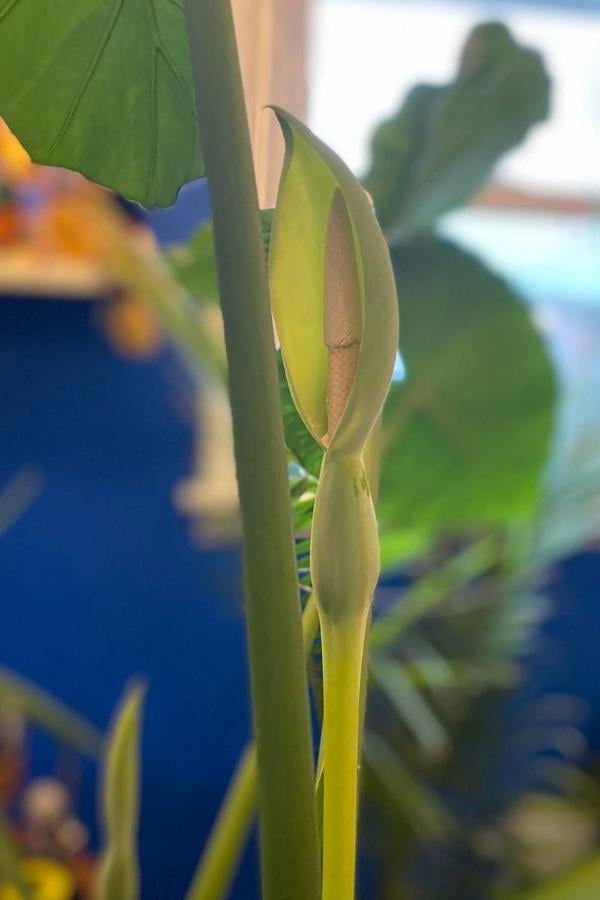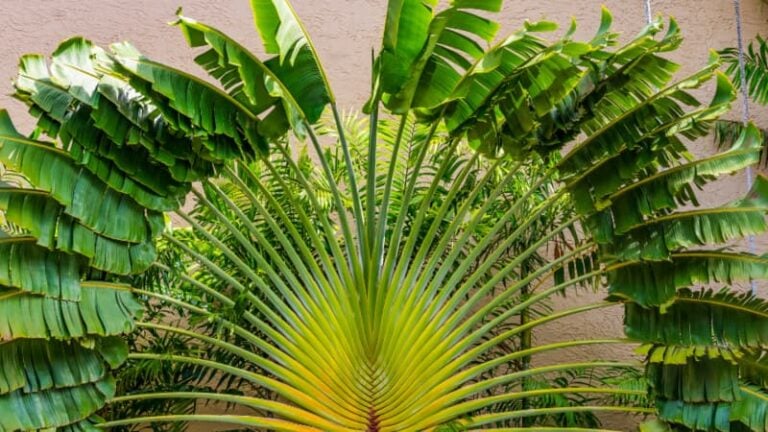Elephant ears are easy-care plants with large, showy leaves. However, with such lush, tasty-looking foliage and starchy corms, you may wonder if elephant ears are edible.
Some elephant ears are edible, while others are not. Among the many Colocasia species used in traditional Asian cuisine is taro (Colocasia esculenta), one of the world’s most commonly eaten vegetables. However, they must be thoroughly cooked and drained before eating to remove the acrid and poisonous calcium oxalate crystals.
Elephant ears from colocasia plants aren’t the only ones you can eat.
The starch-rich tubers and roots of a few Xanthosoma and Alocasia species have long been a staple food in tropical areas.
I’ll tell you which elephant ears you can eat, what you need to do before, and how you can eat them.
Contents
Which Types of Elephant Ears Are Edible?
Colocasia
Colocasia plants are generally safe to eat. Colocasia esculenta, native to tropical Polynesia and Asia, has at least 25 edible varieties.
Over 200 varieties of this tall-growing tropical plant are known as the dasheen (taro), eddo (cocoyam), or cocoyam.
The starchy edible underground parts of these colocasia plants are composed of one or two large central corms surrounded by numerous swollen lateral tubers.
In ideal growing conditions, the edible central corm can weigh up to eight pounds, usually one to two.
The smaller lateral tubers weigh about two to four ounces.
It is necessary to peel back the outer layer of husk from tubers and corms to reveal the sweet and savory flesh inside.
Roots and taro tubers have been eaten safely by many cultures worldwide for hundreds of years.
However, traditional cuisines in many countries in South East Asia, such as Cambodia, China, Vietnam, and the Philippines, use more frequently.
It takes just two months for Colocasia plants to mature into their full size. Generally, the taro tubers intended for human consumption are planted whole in the spring after the roots are no longer threatened by frost and the soil temperature has risen to 70°F (21°C).
Colocasia plants can also be planted early in the warm season in areas with long, wet summers.
Tubers are spaced two feet apart in four-foot rows and dug three inches deep.
When growing plants for consumption, you can use garden fertilizer or a generous amount of compost in the growing medium.
Colocasia comes in many kinds, grown as staple foods and cash crops.
For example, its starchy tubers, ground and used as luaus in Hawaii, are highly regarded and widely grown there.
Colocasia corms can also be used to make delicious and filling Hawaiian poi, a paste-like dish that’s great for the whole family to enjoy.
Other Pacific Islanders, such as the people of Fiji and Tahiti, also enjoy this dish.
Poi is made from fermented colocasia starch paste in most tropical island regions.
Overall, colocasia is a popular type of edible elephant ear.
In addition to human consumption, it is also used to raise livestock such as goats and sheep worldwide.
Besides being used as a vegetable, elephant ear plant leaves can also be used as a wrapper and carrier for warm dishes.
The oxalic acid content in the colocasia plant’s foliage, tubers, and almost all of its edible parts gives them an unpleasant and acrid taste.
This is why they are prepared in a way that breaks down and removes the toxic calcium oxalate.
Alocasia
Alocasia cultivars and varieties are generally not suitable for human consumption.
In addition, some are highly toxic because of their high levels of oxalic acid content.
Only a few varieties of Alocasia have edible stems, as opposed to the edible corms or tubers found in other species of colocasia elephant ear plants.
Even so, the edible stems must be carefully prepared, cooked, and thoroughly drained to avoid stomach upsets or allergic reactions.
Most edible alocasia cultivars are grown commercially. So, they’re probably not edible if you find them in nurseries, greenhouses, or plant shops.
In addition, most Alocasia plants available in countries like the United States, the United Kingdom, and Australia are not food crops but ornamental garden plants and accent houseplants.
With this in mind, the Giant Taro is the most popular Alocasia plant (Alocasia macrorrhiza).
Although it resembles taro, a colocasia plant, it is not taro or cocoyam.
On the other hand, this striking Alocasia beauty is commonly cultivated for its nutritious starchy stem insides and roots, rich in phosphorus, iron, and vitamin C.
It is common in Asia and Hawaii to eat the white parts of edible stems and tubers. For starters, when cooked, the starchy roots resemble potatoes.
You can also cook and eat the fleshy stems’ insides after the oxalic acid has been broken down and eaten raw.
You can also dry and grind the edible Giant Taro stems’ white interiors into a powder for easy cooking and storage.
Among the Araceae family’s edible plants, giant taro stems contain the most carbs per serving.
The giant taro leaves are inedible and commonly used to prepare and serve cooked food like rice and meat.
Overall, elephant ears from the Alocasia genus are among the most unpalatable and challenging to eat of the Aroids.
Xanthosoma
Elephant ear plants of the Xanthosoma genus are native to tropical regions of South and Central America.
These low perennials can reach up to 9 ft. (2.7 m) high. Unfortunately, most Xanthosoma varieties and cultivars are highly poisonous and inedible.
Nevertheless, a few Xanthosoma varieties have been traditionally grown in the West Indies and tropical South America for their dense, starchy, and edible corms.
The most cited and widely grown edible Xanthosoma varieties include Xanthosoma caracu and Xanthosoma sagittifolium (arrowleaf elephant ear).
There are over 20 different names that can be used to refer to the Xanthosoma sagittifolium.
It’s the second most popular edible elephant ear, right after taro. Arrowleaf elephant ear is specially grown for swollen edible tubers.
These generally white corms are starchy like potatoes and a crucial staple food and source of carbs for people in the tropical regions of South America.
The foliage of the Xanthosoma sagittifolium can also be eaten, much like kale or spinach. However, the leaves must be thoroughly cooked.
On its end, Xanthosoma caracu, or the Yautía Blanca plant, was initially cultivated in Africa.
It’s now favored and grown mainly in the West Indies for its pinkish or yellow fleshy parts of the edible corms. These edible roots are starchy and dense in carbohydrates.
As well as the roots, the young, tender foliage of the Xanthosoma caracu is also edible.
But, of course, the corms and leaves must be prepared and cooked before being eaten.
How Do You Consume Edible Elephant Ears?
The edible elephant ear has three primary ways of consumption:
- Foliage can be used as greens – Leaves must be boiled for around 15 minutes in clean water containing a little baking soda. It is especially drained and then rinsed with boiling water before being consumed.
- Tubers, roots, and corms can be consumed just like a potato – They can be pounded or ground to form paste-like consistency or powder. In popular dishes like poi, fermented taro starch is mixed with water and cooked to create a delicious paste.
- Young tender shoots – You can obtain young shoots by growing the corms in the dark. They will produce tender vegetables that taste like mushrooms. Calalou is a highly beloved stew dish that is made from taro leaves. The elephant ear leaves can also be used to wrap or serve steamed meats, cooked rice, and veggies.
Steps To Take Before Consuming Edible Elephant Ear
I must emphasize that raw elephant ears are all toxic. Again, this is due to poisonous and highly irritating alkaloids such as oxalic acid or Calcium Oxalate crystals.
As a result, all edible elephant ear parts, including the roots, leaves, and stems, must be cooked and not consumed raw.
These alkaloids will be broken down and rendered palatable by preparing, cooking, and draining these parts.
If eaten raw, any part of the elephant ear will cause swelling, irritation, and burning in your throat, tongue, and mouth.
In addition, oxalic acid will irritate the gastrointestinal system and cause severe stomach upset in the worst-case scenario.
What’s the Taste, Texture, or Flavor of the Edible Elephant Ear?
The advantage of an edible elephant ear is that it retains its shape when cooked and absorbs the flavors of herbs and spices.
As a result, the leaves are typically lush and taste similar to spinach.
Meanwhile, the edible tubers, roots, or corms have potato flavor and taste.
Because of their high carbohydrate content, they are starchy and dense.
In addition, they have a mealy texture because they can be grated, mashed, boiled, fried, or roasted.







